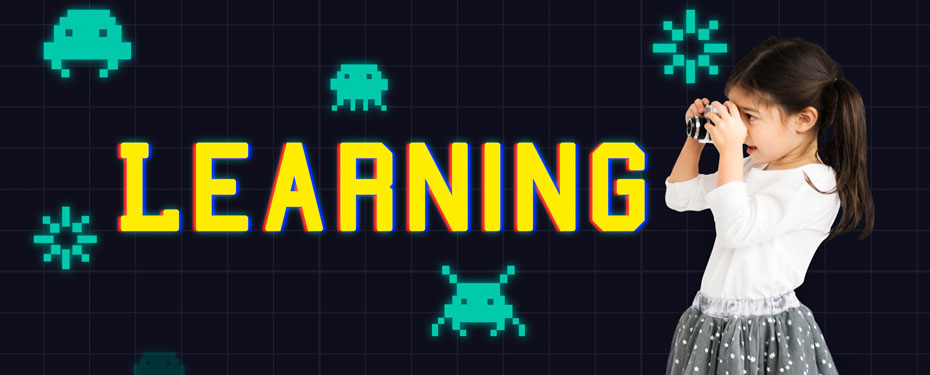
 The global gamification market will grow to $30 billion by 2025, according to MarketsandMarkets forecasts. The development of game mechanics is in demand today in a variety of areas: from banking products and fitness applications to education.
The global gamification market will grow to $30 billion by 2025, according to MarketsandMarkets forecasts. The development of game mechanics is in demand today in a variety of areas: from banking products and fitness applications to education.
The learning process went beyond the simple transfer of information. Now, increasing interest in their subject is one of the main priorities of teachers who care about the quality of knowledge and strive to improve student performance.
Today, schools use gamified mechanics to motivate students. They allow you to better assimilate the material studied or complete non-standard tasks that develop logical thinking and a creative approach to solving problems. Gamification in education is built on “four pillars”: work to increase student motivation, increase student engagement, shorten the learning curve, and improve student performance.  Students and schoolchildren are much more effective if gamification is used in teaching, the American University of Utah found out. According to Polytechnic Muadzam Shah Pahang University in Malaysia, most students associate high classroom engagement with playful learning. Gamified approaches also shorten the training time for specialists – according to Deloitte, courses using gamification methods are completed in half the time compared to conventional ones.
Students and schoolchildren are much more effective if gamification is used in teaching, the American University of Utah found out. According to Polytechnic Muadzam Shah Pahang University in Malaysia, most students associate high classroom engagement with playful learning. Gamified approaches also shorten the training time for specialists – according to Deloitte, courses using gamification methods are completed in half the time compared to conventional ones.

Perhaps the most striking example is the Classcraft group classroom system, invented by Canadian physics teacher Sean Young. A fan of World of Warcraft, Young used elements of game mechanics and interfaces for classwork: students are divided into teams, choose characters, gain experience points, move from level to level, and “earn” new superpowers – the right to use a cheat sheet, for example, or have a snack right on the lesson. The system is universal: it can be used in any school.
Do children keep their mobile phones out of their hands in class? All the better. Think about how you can use them in the game. For example, installing an application on phones and tablets will become the key to completing the “mission.”
Chemistry. Children are a group of astronauts exploring Mars. After collecting the samples, they need to conduct chemical research in the portable Chemist laboratory (Android and iOS). The plot may be different. The main thing is to figure out what practical purpose the experience has in the framework of the game world.
History. Schoolchildren are a team of archaeologists who discovered ancient seals on artifacts from dead civilizations. They need to be scanned. Cards with a QR code can be used as seals. Make them with the code generator. Phones with QR readers will serve as futuristic “scanners.”

Geography. The guys are a group of scientists who invented the time machine and are preparing to go deep into the past when the continents still had different outlines. EarthViewer (Android and iOS) will serve as a “time machine.” The application will show how the planet looked millions of years ago, how the volcanoes of Greenland grew, the climate and landscape changed. Each object on the map contains historical and geological information.
Music. Future. Familiar guitars and drums are no longer in vogue. Music is now created thanks to virtual instruments. Your class is a futuristic orchestra preparing for an intergalactic festival. Let the guys download applications with musical instruments (guitar, flute, piano, drums) to their gadgets and learn a simple composition under your guidance. Of course, this will not make children better at playing the piano. But they will learn the notes and, perhaps, love music more.
Another good catch is to use VR/AR tools. Virtual and augmented reality technologies are now at their peak of development, and all over the world, they are increasingly being used in education. VR/AR help simplify the presentation of complex material, facilitate the memorization process, and motivate children to learn. In addition, they provide unprecedented visibility and realism that simply cannot be achieved in other ways.

The benefits of these technologies for the educational process have been confirmed by many experiments, including even Russian ones. One of the first experiments in the country was carried out last year at the Far Eastern Federal University in cooperation with the VR/AR companies Modum Lab and STEM Games. Schoolchildren from Moscow and Vladivostok were prepared for the OGE in physics using VR, and then their results were compared with those of their peers from the parallel who were prepared in traditional ways. The results of those who studied with VR were on average 13% better.
Worldwide research confirms these results. For example, in an experiment conducted by the companies Mindshare Futures and Zappar, augmented reality provided a higher level of engagement than non-AR equivalents such as watching videos or surfing the Internet.
Virtual and augmented reality technologies can be implemented in many other ways. The variety goes from virtual tours of the school for new students so that they feel more confident in a new place to virtual biological and chemical experiments, recreating historical sites, or virtual excursions to museums.





